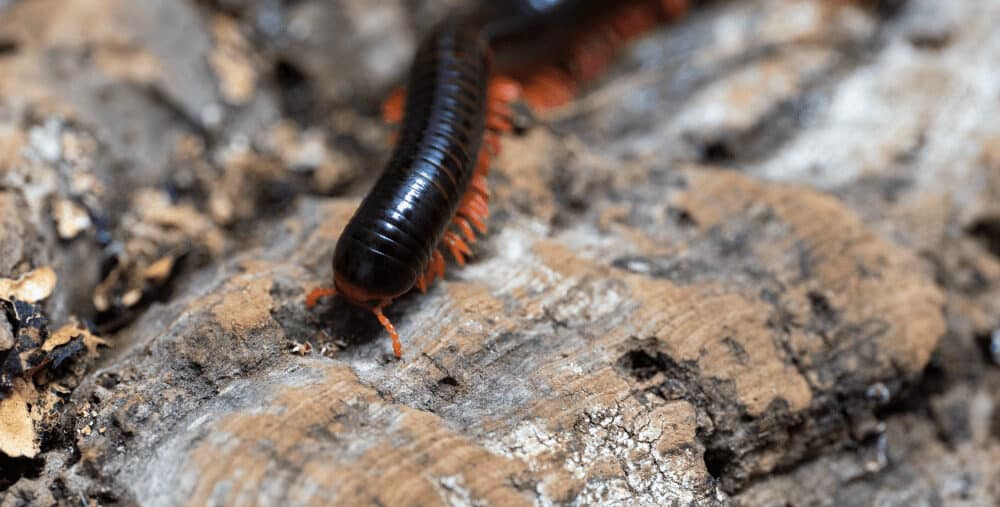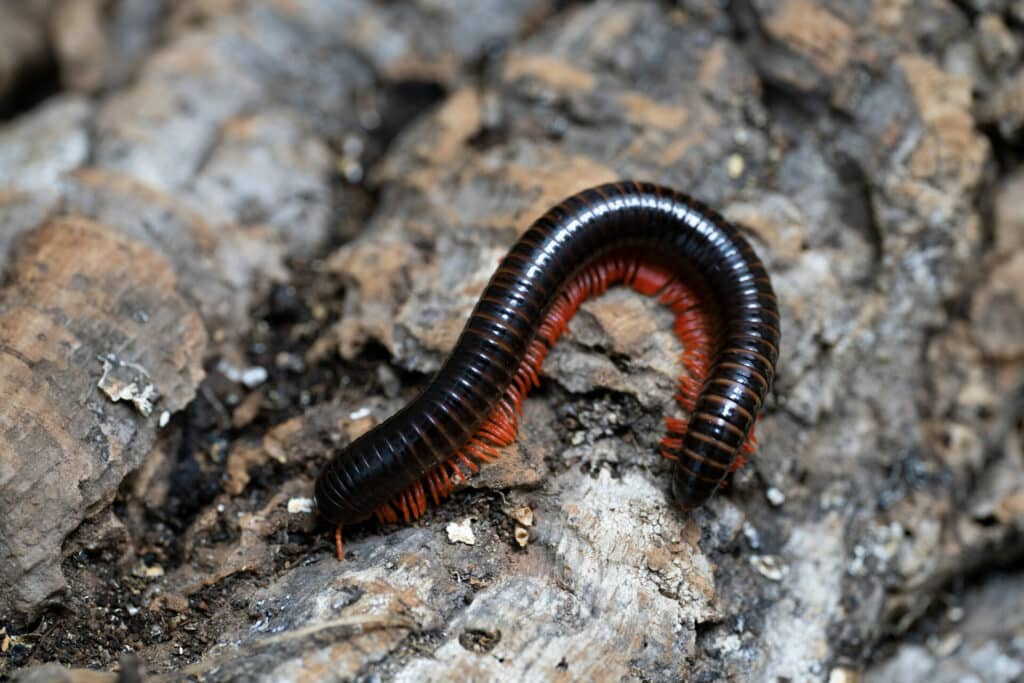Can you spot these crawly creatures in our Energy for Life: Tropical House?
September 29, 2022
September 29, 2022

Several thousand red-legged millipedes have been released in Energy for life: Tropical House. These fascinating creatures have an essential role within the ecosystem, recycling nutrients and enriching the soil. They are detritivores and feed on leaf matter and other organic material.
This species is substantially more arboreal (tree-dwelling) and diurnal (active during the day) than other species of millipede. Next time you’re in Tropical House, spend some time looking down and spot their bright red head and legs amongst the natural forest floor. In addition to their bright-coloured body parts, another distinguishing feature of these millipedes is their main body; males are shiny black, and females are matte black.
In the wild, they can be found throughout Kenya and Tanzania, inhabiting grassland and coastal forests as well as agricultural areas. Millipedes feature in the diets of many animals including birds, lizards, frogs, toads, mammals, and carnivorous insects. As such, they have developed a unique natural defence mechanism: when threatened, they excrete an unpleasant fluid from specialised ozopores along their body, to make themselves less appetizing to predators.
Although the name ‘millipede’ suggests one thousand legs, this is untrue. Most species average between 10 and 100 pairs. The red-legged millipede can have up to 750 legs. These myriapods have a segmented external skeleton called an exoskeleton with two pairs of legs per segment.
Millipedes are an example of an extant primitive animal that has existed on Earth for over 400 million years! Early examples of millipedes have been found preserved in amber.
Did you know? A scientist who studies millipedes is called a diplopodologist.
